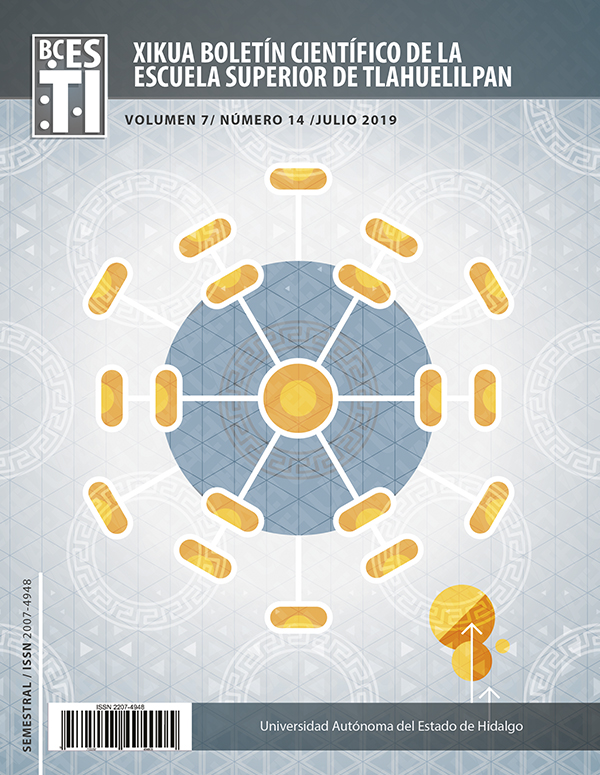The Emotiv Epoc+ headset and the facial expressions
Abstract
In this article is described the state of the art that shows the different advances of the investigations of the distincts electroencephalogram (EEG) emission wireless devices. Also is showed a prototype software that interprets the brain signals coming from the Emotiv Epoc+ headset, this process is also called Brain Computer Interface (BCI) and solves the identify EGG signals problem. The software is designed in Matlab and Simulink that interprets the brain signals, this signals can be saved or manipulated at live. The software turns the brain signals in to a voltage to manipulate external manipulators devices. Actually this work is in the experimentation on human beings stage and is applied the no invasive acquisition of signals method. Some of the experimental achievements of the Emotiv Epoc+ headset. In this article are showed the signals emitted by the headset by using the facial expressions like blink, squeeze the jaw, frown and wink. It’s hoped that this work can help people without movement in their bodies and can’t talk to manipulate objects and interpret through they facial expressions with the headset.
Downloads
References
Alera, R., Vega, A., Galván, I. y Nebro, A. (2012). Multi-objective metaheuristics for preprocessing EEG data in brain–computer interfaces. J Eng Optimiz. Vol. 44. Issue 3. Pp. 373-390.
Birbaumer, N., Ghanayim, N., Hinterberger, T., Iversen, I., Kotchoubey, B., Kübler, A., Perelmouter, J., Taub, E. y Flor, H. (1999) A spelling device for the paralysed. Nature, 398:297–298.
Casadio, M., y Sanguineti, V. (2012). Learning, Retention, and Slacking: A Model of the Dynamics of Recovery in Robot Therapy. IEEE Transactions on Neural Systems and Rehabilitation Engineering . Vol. 20, Issue 3.
Crowley, K., Sliney, A., Pitt, I. y Murphy, D. (2010). Evaluating a brain-computer interface to categorise human emotional response, Proceedings of the IEEE 10th International Conference Advance Learning Technology. Pp. 276–278.
Dornhege, G., Krauledat, M., Müller, K., Blankertz, B. (2007). General signal processing and machine learning tools for BCI. Toward Brain-Computer Interfacing. Cambridge MIT Press. pp. 207-233.
Drake, C., Gumenyuk, V., Jefferson, C., Kick, A., Coaker, M. and Roth, T. (2010). Extending time in bed in short sleepers: Effects on objective sleep parameters measured in the home, Sleep. Vol. 33.
Emotiv. (2019). [Online]. Disponible: http://www.emotiv.com. [Fecha de consulta: Abril, 2019].
Figueroba, A. (2019) Los homúnculos sensorial y motor de Penfield. NEUROCIENCIAS. [Online]. https://psicologiaymente.com/neurociencias/homunculos-penfield [Fecha de consulta: Abril, 2019].
Graimann, B., Allison, B., Pfurtscheller, G. (2010). Brain-Computer Interfaces: Revolutionizing Human Computer Interaction. Brain-Computer Interfaces: Chapter A Gentle Introduction. Springer.
Kawato Mitsuo. (2008). From ‘Understanding the Brain by Creating the Brain’ towards manipulative neuroscience. Philosophical Transactions of the Royal Society. Biological Sciences.
Kennedy, P. y Bakay, R. (1998). Restoration of neural output from a paralyzed patient by a direct brain connection. NeuroReport. Vol 9. Issue 8. Pp. 1707–1711.
Liao, L., Lin, Ch., McDowell, K., Wickenden, A., Gramann, K. Jung, T., Ko, L., Chang, J. (2012). Biosensor Technologies for Augmented Brain–Computer Interfaces in the Next Decades. Proceedings of the IEEE. Vol. 100.
Millán, J., Renkens, F., Mouriño, J. y Gerstner, W. (2004). Brain-actuated interaction. Artificial Intelligence. Vol. 159. Pp. 241–259.
Mitsuo Kawato. 2008. Brain controlled robots, HFSP Journal, 2:3, 136-142.
Maura Casadio, Rajiv Ranganathan & Ferdinando A. Mussa-Ivaldi. 2012. The Body-Machine Interface: A New Perspective on an Old Theme, Journal of Motor Behavior, 44:6, 419-433.
Hornero, R., Corralejo, R. y Álvarez, D. 2012. Brain-Computer Interface (BCI). Aplicado al entrenamiento cognitivo y control domótico para prevenir los efectos del envejecimiento.
Wolpaw,J., Birbaumerc, N., McFarlanda, D., Pfurtschellere, G. Vaughana, T. (2002). Brain–computer interfaces for communication and control. Clinical Neurophysiology. ELSEVIER. Pp. 767–791.









